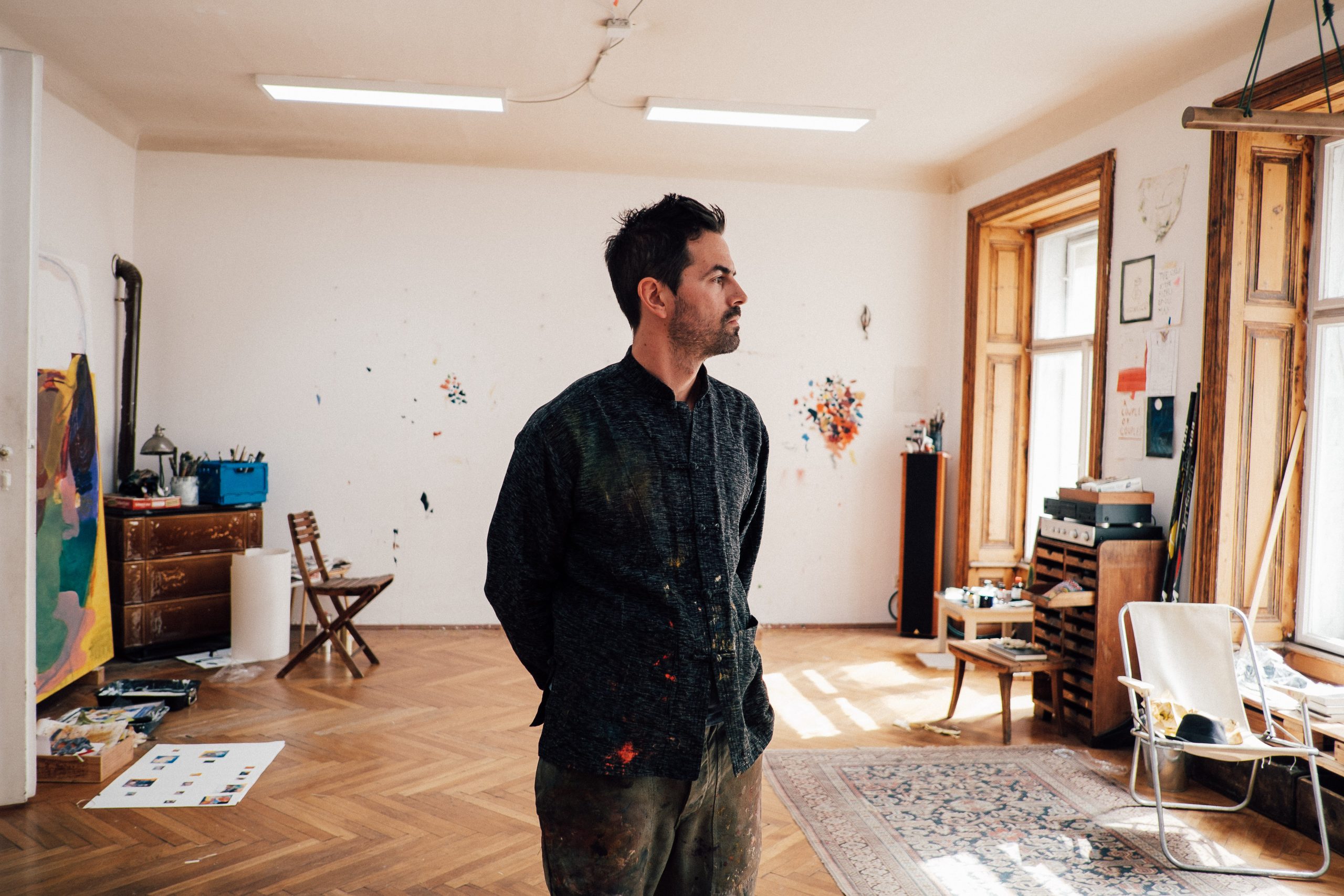Daniel Domig
By Artist Profile
Daniel Domig’s figurative paintings treat the canvas itself as a body – its skin a dense field of nerve endings, a site of contact.
Throughout his nearly two-decade career as a painter, Domig has remained committed to the figure. His paintings are explorations, extrapolations, and instantiations of the body, rather than simple representations of it. Domig has cited Francis Bacon as a kind of artistic hero of his, and the lineage is clear: like Bacon’s, Domig’s figures are contorted, swerved, and indeed reconfigured by their contact with the world, and with each other. Fields of flesh swirl across the picture space. Hands, knees, and tongues reach ever out to each other, and to us, at impossible angles. Like Bacon’s, Domig’s work is interested in what people (and bodies) do together; in the sense of touch; in transparency; in the passage of time that bodies and paintings can register. That is, these are figures not as photography can render them, but as perhaps only painting could know them.
Domig’s paintings are densely layered. Limbs and colours are piled on top of, and into, each other. Under Domig’s brush, that is, both skin and paint become membranes: surfaces made to facilitate contact, intermingling, and a kind of co-constitutive relationship between all of the colours, and all of the people, pictured. Take, for instance, Knees and Toes, 2020. Here, the slope of a knee is also the curve of a neck. A toe is also a nose – or is it a tongue? Or is that tongue a whole woman, prone like a odalisque, facing away from us? In Won Flesh, 2018, two skeletal faces share one tongue. In Even Our Skeletons are in Love, 2020, one figure’s arm ends without a hand, the space where it would have been eclipsed by the opaque green-black head of another. In these paintings, the contingency of our bodies, their dependence on each other, their malleability, and their susceptibility is played out, and echoed in the paint itself.
Domig’s previous descriptions of his method emphasise the absence of sketching from his process. He likens his method to that of the Abstract Expressionists, insofar as he approaches his work open-endedly, letting himself be guided by the way that a painting progresses step by step. It’s certainly fields of paint – some transparent, some thick and impenetrable – which seem to structure this work, rather than sketches or outlines.
